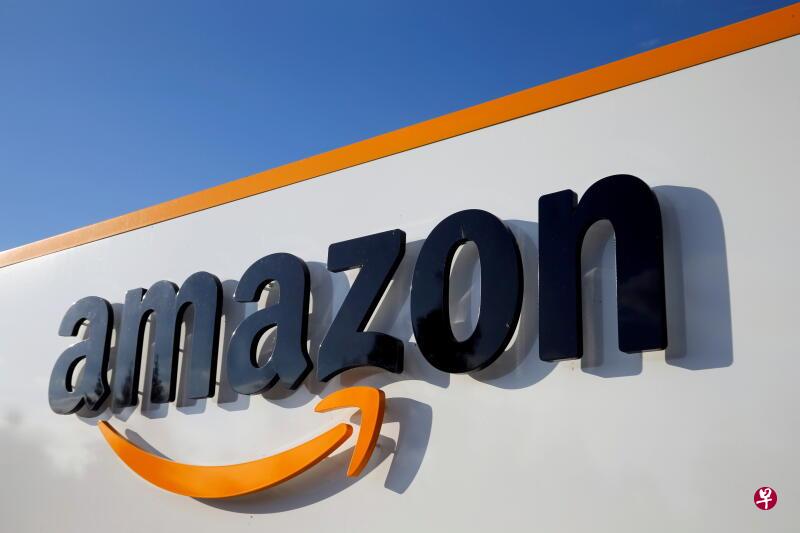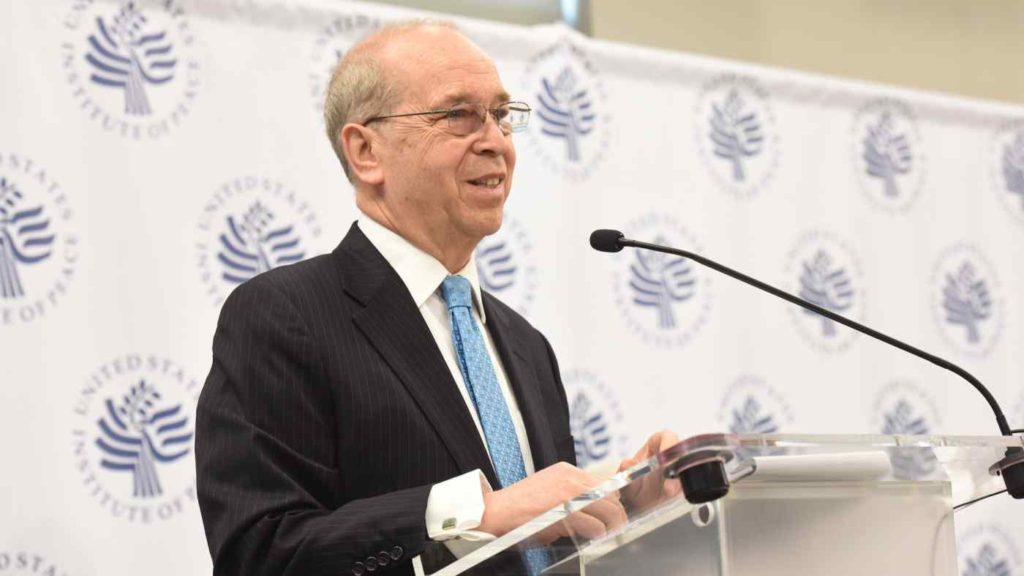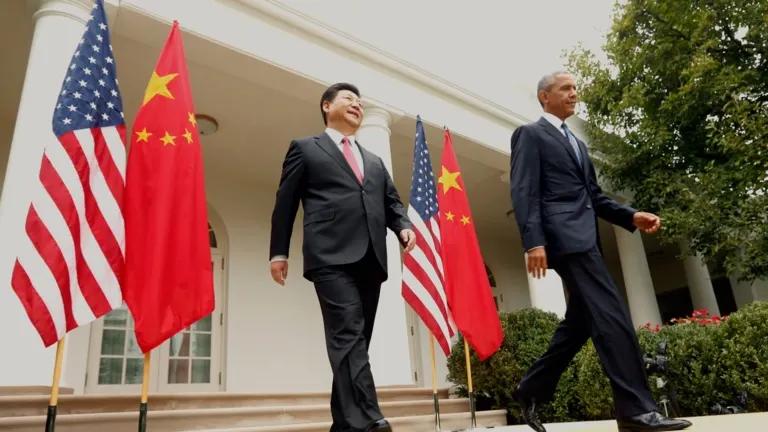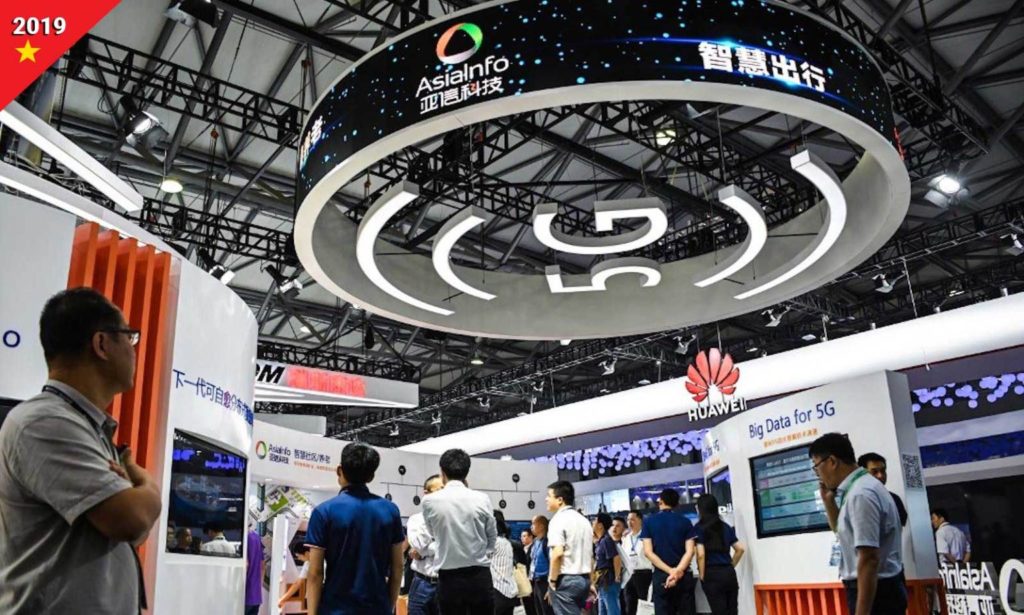遭亚马逊封号后 8000中国商家转战沃尔玛电商平台
文章来源: 彭博社
01/27/2022
彭博社1月27日报道,自从去年4月被亚马逊封店以来,成千上万的中国商家一直在寻找向美国消费者卖货的新渠道,这让没有在美国建立品牌形象或留出营销预算的公司很头疼。因此对许多卖家来说,最好的备选方案是转向沃尔玛的电商网站,该平台在后勤支持和网络流量方面与亚马逊不相上下。

这一时机对沃尔玛来说实属偶然。沃尔玛的电商网站在2021年初启动了一项倡议,吸引非美国商家入驻。到去年年末,中国卖家的占比达七分之一。但业内资深人士表示,这意味着在中国商家方面,沃尔玛和其他在线零售商可能像亚马逊一样面临着同样的问题。
事实上,中国社交媒体平台(如微信)上不乏行业博主或电商顾问,为无良卖家提供所谓的刷单服务,创建虚假的评论、信用卡信息、家庭住址和愿望清单,模拟真实用户的浏览记录,并在电商网站上发布虚假订单。如果方法得当,这些造假行为可以大大提高商家的产品销量和好评数,进而吸引更多顾客增加产品的线上销量。一位网名叫Xiaolu的电商顾问在微信推文中写道:“在沃尔玛(电商网站)上刷单和亚马逊是一样的。唯一不同的是,到目前为止,沃尔玛还没有像亚马逊那样采取严厉的打击行动。”
当彭博社联系到Xiaolu时,她拒绝发表评论。沃尔玛在一封电子邮件中写道,平台使用内部流程、独立的第三方供应商和其他数据来认证评论并检测虚假评论。“如果发现评论造假,会被网站删除。将对违规方进行审核,以采取纠正措施或删除。我们一直在识别虚假评论,但难免会有遗漏。”
据深圳跨境电子商务协会称,2021年,亚马逊以违规操作为由封禁了5万多个中国零售商的账户。
沃尔玛的电商平台并不是被亚马逊封号的中国卖家的唯一选择,阿里巴巴旗下的全球速卖通以及位于加州的北美电商巨头新蛋(Newegg Commerce)也能满足需求。新蛋拒绝对其平台审核政策发表评论。全球速卖通表示,制定了“严格的政策和措施来防止卖家违反平台的要求,包括虚构买家评论”。
尽管如此,作为美国第二大在线消费市场,沃尔玛对中国卖家来说特别重要。沃尔玛在2021年初推出沃尔玛配送服务(Walmart Fulfillment Services),即WFS,与亚马逊物流(FBA)类似,为中国品牌提供仓储、配送和售后支持。沃尔玛还与中国第二大电商巨头京东达成合作,在Walmart.com上开店,并为其挑选合格的供应商。
这项活动取得了成效。研究公司Marketplace Pulse估计,从2021年3月到2022年1月中旬,沃尔玛网站上新增的国际卖家中约8000名来自中国,占新增商家总数的14%。Marketplace首席执行官若萨斯·卡齐克纳斯在12月的报告中写道:“WFS让购物者无需考虑卖家的营业地点,由沃尔玛代表卖家从国内仓库发货。FBA在吸引国际卖家入驻亚马逊方面发挥了关键作用,同样的情况(正在)沃尔玛身上上演。”根据Statista的数据,亚马逊在美国拥有的电商市场份额为41%,而沃尔玛只有6.6%。
据两位匿名的深圳电子产品卖家说,与亚马逊相比,其他在线零售商的销售规则更加模糊,因为他们需要这些替代平台来抵消亚马逊账号封禁带来的损失。
他们称,亚马逊明确表示,卖家不能提供奖励以换取好评。根据彭博社获悉的电商平台政策,其他主要市场允许提供一些免费样品,以鼓励消费者留下评论。深圳跨境电子商务协会会长王馨说,其他市场还没有跟随亚马逊的步伐,对违规卖家采取行动。她说,一些卖家只想在“能赚多久就赚多久”。
沃尔玛的网站政策规定,卖家只有满足样品的要求,才能请求买家留下产品评论。亚马逊制定了一整套规则,其中非常详细地说明了违规行为,包括使用第三方服务提供与用户评论挂钩的免费或折扣商品。
为中国电商卖家提供咨询服务的香港顾问彼得·卢森堡说:“沃尔玛非常乐意通过吸引更多卖家来增加商品数量。更多的卖家会带来更多的产品,从而吸引更多的客户。”他不会接受那些想作弊的客户。他说,评论造假不会成为沃尔玛的大问题。“在这个阶段,我认为他们并没有认真考虑这个问题,也没有为这个问题而烦恼。”
沃尔玛在其声明中说,其严格的审查和审计程序能确保购物者的体验和服务,并将继续投资,把Walmart Marketplace打造成世界上最值得信赖的电商平台之一。
一些被亚马逊封号的卖家希望回归。总部位于深圳的电源箱制造商傲基科技的联合创始人徐劲科正在发起一个自律小组,以帮助中国网络卖家明确在美国的商品销售要求。
亚马逊“封号”余震:留下还是出走?中国数万跨境卖家绝处求生
来源:每日经济新闻
作者:陈婷、王郁彪
8/15/2021

8月初,盛夏日,热浪滚。深圳市龙岗区坂田街道,跨境电商卖家的聚集地。曾经繁华忙碌、淌金流银之处,如今正笼罩在灰暗情绪中。
徐凌(化名)在坂田经营着一家规模超过四十人的跨境电商公司,主要经营亚马逊平台。从今年4月起,他感受到了一天比一天更沉重的气氛。
“我动不动听说最近哪个邻居房子退了,哪个邻居公司破产了,哪个邻居店铺被冻结了四千多万拿不回来。”恐慌情绪逐渐蔓延,让他在盛夏竟有唇亡齿寒之感。
整个七月,这些传闻越来越密集地涌来。而这一切,都源于国际知名电商平台亚马逊的一场封号事件。
但凡被封号的卖家,不但店铺被关,就连店铺账户内的资金,都被全数冻结。目前,事态依然在延续。
不仅是深圳板田,中国国内多家跨境电商企业均卷入这场漫长的风波。
8月5日,义乌华鼎锦纶股份有限公司(以下简称“ST华鼎”)发布公告称,旗下全资子公司深圳市通拓科技有限公司(以下简称“通拓科技”)多个品牌涉及的店铺,被亚马逊暂停销售、资金被冻结。截至公告日,通拓科技被禁售关闭店铺数共54个,涉嫌冻结资金4143万元人民币,占公司2020年年末货币资金的 4.27%。
7月6日,天泽信息也发布公告,通报旗下跨境电商子公司有棵树科技有限公司(以下简称“有棵树”)涉嫌违反亚马逊平台规则,已知的涉嫌冻结的资金约为1.3亿元。
截至ST华鼎的此份公告,大名鼎鼎的“华南城四少”(赛维、傲基、通拓、有棵树)中,已有三家受到此次封号风波的影响。
4月30日至今,傲基、帕拓逊、泽宝等多家头部跨境电商的产品相继遭亚马逊下架,大部分卖家2020年营收都达数十亿。
“大卖”遭殃,“小卖”们更是遭遇“灭顶之灾”。据徐凌透露,资金链不够稳健的“小卖”们需要面临多方资金压力:亚马逊店铺账户资金被冻结,货物在海外仓被迫低价贱卖,供应商索要货款……破产不过是在一夕之间。
“封号刚刚开始的4月份其实还好,我们周边并没有充斥着如此恐怖的气氛,真正令我们觉得恐慌的是6月中下旬开始,陆陆续续有深圳头部卖家开始死品牌、死账号。”徐凌说,以前小卖家账号被封并不鲜见,但大卖被大规模封号,绝无仅有。
深圳市跨境电子商务协会执行会长王馨证实了他的说法。她告诉《每日经济新闻》记者,此次亚马逊针对中国卖家的封店事件是历史上第五次。第一次是在2015年,针对中国婚纱卖家,此后又先后针对平衡车、移动电源以及疫情时期的口罩卖家。不过,前四次封杀都只是针对某个特定品类,在产品质量、设计专利等问题上“动刀”。
这一次显然很不寻常。王馨称,这轮治理,亚马逊更多是针对品牌型卖家。
“现在,有人说已经封了5万家店铺,有人说已经封了10万家店铺,这谁能给出具体数字?”徐凌的双眼望向阳光灼人的街道。他的公司已有3年,好的时候月销售额也有上千万。但对于他,以及不计其数的亚马逊中国卖家而言,明天和封号,不知道哪个会先到来。
现在,徐凌和他同做跨境电商的朋友们保持着默契,谁也不主动提起亚马逊,这是一件伤心事,自己无力掌控。
不过,随着亚马逊一轮一轮的封号,大家表面上闭口不谈,内心却非常焦灼。徐凌一部分朋友受到杠杆影响,已经“熬不下去了”。
“其实,很多卖家都是通过杠杆物流费和供应商的货款进行日常经营的。”徐凌透露,“比如,一个卖家向供应商预订了500万的货,定金可能付了50%,半年后再和供应商结款。但结款的前提是货能够卖得出去。如今账号一被封,货卖不出去,钱也被冻结在账户中,拿什么结款呢?”
据徐凌透露,如果主账号因为刷单等违规操作被封,那么该账号关联的店铺及品牌大概率都会受牵连,授权了该品牌的其他链接也会一并被下架。
这种情况下,卖家还需要支付额外的费用处理货物。一来,他需要将原先存放在FBA(Fulfillment by Amazon,即亚马逊代发货服务)仓库内的货移出去,“移货的费用就是一笔,之后卖家可能需要海外仓帮忙存储货物,这又是一笔费用。如果卖家之后还想把产品卖出去,需要更换产品上的原标签,换标又是一笔费用。”
为了止损,绝大多数被封卖家会选择低价贱卖库存,“有的会选择海外的清库存平台把库存清了,或者让其他卖家分销他的商品。”徐凌说。
一名亚马逊小卖向《每日经济新闻》记者表示,他在海外仓的货已经能退的退,不能退的就做丢弃处理,“主要损失不是货,是账号内的营业额,账号一旦被封,账户里的钱也不是卖家的了。”
眼下,部分公司毫无招架之力,已经无奈退场。有业内人士提供的一份聊天记录显示,一名跨境电商从业人员说自己已经失业了,“我前公司奥睿拓科技,一夜之间被关了70多个店铺,已经倒闭了。”
8月5日,《每日经济新闻》记者拨打奥睿拓科技官方电话,电话始终忙音无法接通。
ST华鼎也在公告中表示,亚马逊是通拓科技最大的第三方销售平台,上述受影响店铺的销售额约占通拓科技2021年1~6月份销售总额的18%,将对本年度跨境电商业务的发展产生一定程度的不利影响。
有棵树披露员工流失情况严重。其在公告中表示,在职员工人数已自2021年1月1日的近2800人下降至目前的约1400人,其中主管(含副主管)级别以上离职人员近280人。
一线卖家们破产、倒闭、裁员的同时,供应商也受此事牵连,非常时期非常做法。
东莞市某家具制品有限公司负责人林芝(化名)向《每日经济新闻》记者表示,由于亚马逊封号一事,公司货款在外有100多万拿不回来,“今年特殊行情,我们已经不敢做账期了,现在来拿货的,我们一概要求现金。”
“现在的情况非常难,很多供应商都是亏本在做,(对方是)老客户,没办法。”林芝感叹,为了度过这个寒冬,他决定收缩战线,“今年我们已经转了好多客户出去。”
亚马逊对于违规店铺的“绞杀”,似乎远未结束,徐凌不知道什么时候会轮到自己。
“前段时间有大量卖家的店铺后台出现了黄色的警告,我们内部说后台出现了黄色警告栏的卖家,可能就是下一次被绞杀的对象。也有传言说,亚马逊9月份可能会去查收款关联的问题。”徐凌说。
记者从多个业内人士处得知,亚马逊查封收款关联的举动对业内可能造成更大的恐慌。徐凌表示,许多卖家会将一张银行卡绑定十几个账户,一旦查起来,徐凌估计,现在还活着的店铺们就得再“死”一半。
业内人士告诉《每日经济新闻》记者,亚马逊判断账号存在关联的因素有很多。
“有一种说法是,以收款账号为纬度,凡是同一个公司名义开的收款账号,就会判断为关联账号,被封后亚马逊不会给任何申诉机会。”该业内人士表示。
另有卖家称,可以导致关联的因素非常多,IP、登录环境、注册资料、商品信息等,都有可能被判断为关联。
暂时,亚马逊还没有大范围查封关联账号,“亚马逊小规模地查封关联账户是一直在持续的行为,我们担心的是它一次性地几万几十万个地查关联账号。”徐凌说。
封号风波影响如此之大,亚马逊必然不是一时兴起。
封号风波初期的5月20日,“亚马逊全球开店”官方公众号发出《致亚马逊全体卖家信》,信中称,一直以来,亚马逊的政策明确要求卖家不可以滥用评论。
“近期,我们暂停了部分卖家的销售权限。未来,我们也将持续履行这一职责,严谨地监督商城的运营环境、并慎重地采取行动。亚马逊采取的这些举措在业内引起了较大的反响。在此,我们也想向各位进一步说明:亚马逊治理不合规运营行为的态度是坚决的、也是一贯的。”亚马逊方面在信中表示。
徐凌称,规矩是亚马逊方面制定的,当卖家签订卖家协议的那一刻,但凡这类行为就都是违规的,“卖家协议里写得很清楚,这些行为是不允许的,违背了所谓的卖家公平交易原则。”
亚马逊卖家协议中提到的“滥用评论”,类似中国境内电商卖家的“刷单”行为。多名亚马逊卖家向《每日经济新闻》记者证实,许多卖家会在商品中放“好评卡”,如果顾客打了好评,客服就会给顾客返数额不等的好评费用。
既然如此,为什么亚马逊卖家还要明知故犯、前赴后继?
多名业内人士的口径非常一致:在亚马逊上,更多的好评与更好的销量直接相关。
“亚马逊坚持自己‘顾客第一’的原则,因此在算法上给予顾客(买家)的评论很高的权重,一个差评可能会导致卖家的产品链接排名下降很多。”跨境电商观察人士、蓝海亿观网创始人吴以辉向《每日经济新闻》记者分析了其中原因。
但“顾客第一”是一把双刃剑,来自顾客的好评也会带给卖家肉眼可见的好处。在“好评”带来的收益与“差评”造成的恶果之间,卖家抱着侥幸心理,选择在“红线”的边缘游走,并成为一种屡禁不止的“小动作”。卖家们认为,长期以来,亚马逊的态度无非是小惩大戒、睁一只眼闭一只眼。
而这一次,究竟是什么,让亚马逊决定“大开杀戒”?
有业内人士认为,此事之所以会发酵,与《华尔街日报》6月13日发表的一篇报道有关,报道名为《Fake Reviews and Inflated Ratings Are Still a Problem for Amazon》,内容直指RAV power Store使用小卡片获取好评。
或许是舆论压力,让亚马逊开始对“滥用评论”卖家忍无可忍了。
6月16日,“亚马逊全球开店”公众号又发一文,名为《打造值得信任的顾客评论体验》。亚马逊方面在文中表示,2020 年,我们在顾客看到之前就已经阻止了超过2亿条疑似虚假评论,其中超过99%都是我们主动监测发现并移除的。并表示,亚马逊将继续加强主动管控、通过优化流程和工具加大行业协作,并让不良行为者对其行为承担责任。
封号就此掀起高潮。
值得一提的是,当地时间7月5日,安迪·贾西(Andy Jassy)从亚马逊创始人杰夫·贝索斯(Jeff Bezos)手中接棒CEO一职。也许是“新官上任”之故,在迎来新任CEO之前,亚马逊开始对平台违规卖家进行封号清理?总之,时间点耐人寻味。
然而,业内对封号原因的解读,还有不同看法。
中国(深圳)综合开发研究院新经济研究所执行所长曹钟雄对《每日经济新闻》记者表示,受2020年疫情影响,中国卖家在亚马逊平台上突飞猛涨,也因此愈发鱼龙混杂,部分卖家确实存在把在中国互联网平台上的做法延伸到国际平台的行为。
数据显示,2017至2020年三年间,亚马逊中国卖家占比逐年增加,由23%升至42%。在中国跨境电商里,广东卖家占到70%,而这当中的50%都来自深圳。
曹钟雄认为,伴随着越来越大的卖家规模,中国卖家在亚马逊平台上的此类违规行为引起了美国监管部门的注意,相关部门也在倒逼平台解决这些问题。
另外,亚马逊自身或许也有“清扫门户”的内在需要。
根据亚马逊7月30日公开的监管备案文件,7月16日,卢森堡国家数据保护委员会裁定亚马逊对其用户数据保护不力,违反了欧盟《一般数据保护条例》GDPR),由此对亚马逊处以7.46亿欧元(约合人民币 57.29亿元)的罚款,刷新了全球科技巨头在数据隐私保护领域的罚款纪录,也是欧盟有史以来最大一笔关于数据隐私侵犯的罚款。
另据不完全统计,目前在全球范围内,亚马逊正面临至少12项反垄断调查。而“独霸大量敏感个人信息及相关市场数据”则成了悬在亚马逊头上最危险的达摩克利斯之剑。
“反垄断造成的巨大压力让亚马逊不得不再次正视自身合规经营的问题,整治平台不良风气仅仅是第一步。”清华大学互联网产业研究院副院长刘大成在接受《每日经济新闻》记者采访时,认为这是亚马逊此次大规模封杀中国卖家的核心原因。
但有人质疑:在封号事件上,亚马逊是完全出于公正且毫无私心的吗?尤其是超过5万这样的巨量中国卖家被封号,其间是否存在“误伤”?
王馨认为,“亚马逊基于自身平台规则封杀中国卖家,规则本身是否公平、清晰,执行规则时有无选择性执法,以此打压中国品牌等问题,仍然值得关注。”她称,“亚马逊既是裁判员也是运动员”,或许很难服众。
值得注意的是,欧委会在不到两年的时间里,多次对亚马逊展开反垄断调查。2020年11月,其发现亚马逊存在滥用市场支配地位,使用第三方卖家的数据,为自己的直营产品牟利。此外,亚马逊还面临同时作为商家和平台所有者的双重身份所引起的潜在冲突的调查。
王馨告诉记者,一直以来,亚马逊大规模封杀中国卖家都有“策略性封杀”嫌疑。“即(封号)集中发生在大促前。这次是始于Prime Day大促,往年在‘黑五’以及圣诞节前后。被封的卖家想要解封账号,通常需要1至3个月,这也就意味着他们错过了各个大促销售旺季节点。”
事实也印证了她的判断。“这次我们发现,铺货型卖家几乎没有损失,被封的往往是品牌卖家(即俗称的‘精品卖家’)。其前期花费巨额成本为大促或新品上市进行引流,但因封店事件影响,消费者在购买时只能另做选择。如此一来,背后牵扯到的往往是巨额的利润。”
王馨称,“近几年,亚马逊根据第三方商家销售火爆的品类,会有针对性地推出自营品牌。”据公开报道显示,2009年,亚马逊推出了自营品牌业务“AmazonBasics”,这些自营品牌无固定类目,主打高性价比。得益于亚马逊自身强大的流量、成熟的供应链开发,AmazonBasics的品类扩张速度和销售成长都很快。
根据Quartz的数据,AmazonBasics 2013年产品数量为252个,到2019年,已上升到1700+个。据美国投行SunTrust预测,亚马逊自有产品业务在2018年为公司创造了75亿美元的收入,这个数值在2022年将增长到250亿美元。
拜登政府正持续发力科技反垄断。最近,美国众议院反垄断小组委员会主席大卫·西西林就针对科技巨头的反垄断立法接受媒体专访,记者问:亚马逊是否必须分拆成两个不同的网站,一个展示和出售他们自己的产品,另一个针对第三方卖家?或者干脆关闭自己的品牌?
西西林回答:应该是这样!或者卖掉那部分业务……竞争的重点是为亚马逊以外的其他竞争对手创造空间。
据王馨称,目前有多位头部中国卖家向她反映,申请后解封的账号比例可能只有20%。
亚马逊处心积虑,但其强推自营品牌已经屡受业内和媒体诟病,认为是搜集第三方卖家数据、与第三方卖家竞争,并在第三方卖家商品页面推送同类且价格更低的自营品牌产品。
当地时间7月29日,亚马逊发布了2021财年第二季度财报。财报显示,亚马逊第二季度净销售额为1130.80亿美元,同比增长了27%,不计入汇率变动的影响为同比增长24%;净利润为77.78亿美元,同比增长48%。这两项数据均低于此前分析师预期的1152亿美元和78亿美元。
财报发布后,7月30日晚间,亚马逊股价低开低走,跌幅7.56%,市值一度蒸发近万亿元,这也让亚马逊跌出“2万亿市值俱乐部”。
亚马逊封店风波仍在发酵,中国卖家开始反思将鸡蛋装在一个篮子里的弊端,寻找“多条腿走路”的可能性。
卖家们承认,亚马逊的确可以带来引傲全球的流量以及利润表现。
“在7月1号欧洲税改之前,亚马逊上自发货卖家的毛利率能够达到35%,品牌卖家的毛利大约在20%,如果品牌运营得好、品牌溢价高的话,可能有30%的毛利率。”徐凌说,一个同样的产品,在同类型平台上可能卖8美元,但在亚马逊上可以卖到20美元。
跨境电商早期的火热,让无数中国国内商家趋之若鹜,但受制于运营能力低下、流量基础薄弱等影响,加速入驻如亚马逊等第三方电商平台,进行跨境电商品牌的经营成了不二法宝。

亚马逊等平台成熟的运营模式和巨额流量,让跨境电商品牌和中国卖家享受了早期红利。但随着时间推移,这种平台型交易模式劣势开始显现,除了会受到诸如亚马逊封店潮这类事件的影响外,商家自身也难以形成品牌集聚效应,流量难以转化,数据难以利用,反倒是让客户对平台的黏性越来越强了。
王馨称,亚马逊的平台规则摆在那里,除了继续适应,卖家们别无选择。此外,她也建议,中国卖家应加速开启全面建站之路,如在速卖通、WISH、eBay、Lazada等海外平台开店,或是自建独立站。
不过,其他平台也有门槛。徐凌向记者透露,他认识的部分卖家已经开始转向沃尔玛、速卖通等其他第三方平台,“沃尔玛的入驻要求偏高,卖家必须得有在其他平台运营的经验,并且单店一个月要做到100万美金的销售额,才允许卖家入住。”记者了解到,在市场上,沃尔玛一个店铺一度被炒到10多万元人民币。
归根到底,亚马逊一封号,中国卖家就颤抖,反映出中国卖家过度依赖第三方平台,造成了经营风险高企,再次警示了平摊风险的意识和能力应该进一步增强。
在亚马逊等电商平台对卖家政策日益收紧的情况下,出口跨境电商做自有品牌和独立站也已成大势所趋。作为跨境电商落地的主要方式之一,自建独立站属于自营型交易模式。如业内知名的独立站系统服务商Shopify,就是起家于亚马逊平台的“盲区”,贴合了欧美市场自有品牌占有率较高的特征。
相较于平台型交易模式,自建独立站不受第三方平台规则约束,运营形式灵活。独立站相当于卖家的私域流量,可以100%留存数据,有利于盘活和挖掘流量、数据价值。女装起家的垂直跨境电商SHEIN一开始就是自营模式,有自己独立的APP。目前它已将产品线拓展至男装、童装、鞋类、家居、家纺、美妆、配饰等诸多品类。公开报道显示,自2020年始,SHEIN已经不再是单纯的自营独立站平台,而在尝试将女装周边的一些品类开放给其他商家,并由SHEIN为这些商家提供物流运输。
被亚马逊暂停销售的ST华鼎也在公告中表示,其不但将增加如eBay、沃尔玛、速卖通、Lazada 等其他电商平台的销售占比,也会加大通拓科技自营网站的投入,积极拓展欧洲、美国线下实体店渠道。
但也须看到自建独立站的B面:较高的运营成本以及运营难度,成了许多卖家特别是中小卖家难以承受之重。和入住平台相比,这就是“自建新房”和“拎包入住”的区别。
徐凌也说,“独立站货不对板的问题非常常见,卖仿牌才能赚钱,如果没有能够保证高质低价且非标的供应链优势,正经做生意很难盈利。”
目前,独立站的相关基础设施正在逐渐完备。
《每日经济新闻》记者了解到,7月29日,微盟发布跨境独立站产品ShopExpress,提供包括对接海外主流社交媒体、搜索引擎等多渠道,为卖家提供海外媒体精准引流服务;提供SaaS独立站系统等一站式服务。
事实上,近半年来,跨境电商ERP(Enterprise Resource Planning 企业资源计划系统)赛道热钱滚滚,马帮、易仓、领星、店小秘、积加等跨境电商服务商都获得了大额融资。据不完全统计,跨境电商ERP上半年累计融资超过25亿元。
“跨境电商投资的基本逻辑未变,长期依旧向好。”王馨称,“此次大规模的亚马逊封店风波,短期内可能会让中国卖家出海有所降温,资本也会回归理性,但长期来看,随着更确定性机会的到来,资本对于跨境电商及其各个细分赛道仍会热情高涨。”
地方政府也正出手。《每日经济新闻》记者注意到,8月5日,深圳市商务局发出通知,对通过独立站销售渠道开拓海外市场的跨境电商企业进行资金支持:单项目给予200万元资助,最多单项目申报奖励可高达300万元。
近日,中国国务院办公厅印发的《关于加快发展外贸新业态新模式的意见》指出,要完善跨境电商发展支持政策,扩大跨境电子商务综合试验区试点范围;提升传统外贸数字化水平,支持中小微企业创业创新;支持外贸细分服务平台发展壮大,鼓励外贸企业自建独立站等。
无疑,封店风波让跨境卖家们备感焦虑,事实上,我国有关政府部门早已关注此事。
7月22日,在国新办举行的新闻发布会上,商务部对外贸易司司长李兴乾针对“有些商家的行为被认为违反了亚马逊平台的《卖家行为准则》等格式条款,经营受限”一事表态称——
总体上看,这是外贸新业态发展过程中出现的问题,是阶段性的“水土不服”,是“成长的烦恼”。在边学边干、相互学习了解的过程中,商务部希望平台珍惜广大企业作出的重要贡献,充分尊重各类贸易主体,相信平台和企业能够找到既合规又合理的解决之道。商务部会持续关注相关进展。
疫情横扫全球后,尤其是2020年以来,中国跨境电商增长迅猛。中国海关统计数据显示,2020年中国跨境电商进出口额达1.69万亿元,增长了31.1%,其中出口1.12万亿元,增长40.1%,进口0.57万亿元,增长16.5%。通过海关跨境电子商务管理平台验放进出口清单达24.5亿票,同比增加了63.3%。作为世界工厂,中国跨境卖家是各大电商平台争抢的对象。
王馨认为,若将中国成熟经验以及品牌成长逻辑加速复用至海外,跨境电商未来可期。
清华大学互联网产业研究院副院长刘大成则认为,跨境电商的发展过程中,不可避免会受到贸易间的冲突等宏观因素影响,但针对此次亚马逊封店中国卖家的具体行为,我们应该明晰“规则在前,执行在后”。
“跨境电商和过去产业链出海逻辑是一样的,既然要出口,就要接受国际规则。但同时,我们也要认真学习和了解国际商业规则,更要知道其背后的潜规则,而这种潜规实际上是文化和文化之间的碰撞。”他说。
在制造全球化、经济全球化、商贸全球化的大背景下,积极引导规则的制定和执行同样重要。
当然,这是另一个更宏大、更长远的话题了。
即使是阶段性“水土不服”,或者不得不面对“成长的烦恼”,我国跨境电商激荡数年,终将从野蛮生长过渡至精耕细作,也必将从莽撞“小白”扎进不一样的土壤,奋力挣出强势品牌。
Amazon blocks top Chinese sellers, forcing industry to seek new pathways
Cross-border e-commerce challenged
By By Qi Xijia
8/15/2021

The move to block Chinese sellers by US-based e-commerce giant Amazon may speed up the pace for the Chinese companies to develop more direct selling channels and construct their own platforms, online vendors said.
On Friday, the Shenzhen Municipal Bureau of Commerce held a closed-door conference with about 10 leading cross-border e-commerce enterprises in response to Amazon’s move to shut down Chinese sellers, to discuss and navigate the influence it had on local cross-border e-commerce, the Security Times reported on Friday.
This comes after the US platform has banned a number of top Chinese merchants from its platform who have been alleged for paying for reviews. The list includes some big-name wholesalers on the platform with annual sales exceeding $1 billion.
According to the Shenzhen Cross-border E-commerce Association at least 50,000 Chinese merchant accounts had been affected by Amazon’s move since May, and that Chinese cross-border e-commerce companies had suffered losses of more than 100 billion yuan ($15.4 billion).
A number of cross-border e-commerce enterprises and associations told the Global Times that the incident has prompted the industry to develop more selling channels and build their own independent websites.
The storm
Since May, Amazon has blocked up to 50,000 Chinese sellers on its platform. The reasons for the ban include “improper use of review functions”, “soliciting fake reviews,” and “manipulating reviews by giving gift cards.”
The ban came as a huge blow on some Chinese vendors.
Yiwu Huading Nylon Co, one of the major domestic civil nylon filament manufacturers, issued an announcement on August 5 that its wholly-owned subsidiary Shenzhen Tomtop Technology has a number of brands suspended and funds frozen by Amazon. As of August 5, 54 stores under Tomtop Technology were banned and 41.43 million yuan was frozen, accounting for 4.27 percent of the company’s cash reserve at the end of 2020.
On August 6, another mega seller Patozon issued a notice that it has suspended its research and development staff for six months until February 6, 2022. In 2020, Patozon reported net profit of 300 million yuan and is known as one of the top three Chinese sellers on Amazon with more than 600 Best-Seller products.
The way that Amazon has blocked Chinese selllers is unfair, Wang Xin, president of the Shenzhen Cross-Border E-Commerce Association, told the Global Times.
“It not only blocked accounts in violation of its rules, but also other related accounts, which could paralyze upstream supply chain and kill the enterprises,” Wang said. “Is it a penalty decision based on the rules of the platform, or is it a strategic decision? In fact, we see that Amazon itself is also selling products similar to the products of the closed accounts,” she said.
Way out
The digital blockade put in place by Amazon has taken a heavy toll on the sellers, however it also educated the cross-broader e-commerce traders on how to optimize operations and form relationships with global sellers.
“The internet has undoubtedly put us in the fast lane, but we need to run faster on the track. It depends on the cultivation of the quality of the sellers, improved learning ability and national-level support,” Wang said.
Following the latest incident, many sellers are reducing their reliance on Amazon, instead pursuing a multi-platform development strategy and developing their own websites.
“Amazon’s closure of accounts is a blow to our industry. A lot of people told me that I would not put goods on Amazon anymore. In the past, maybe 90 percent of their goods were sold on Amazon but now the ratio may be under 30 percent,” Wang said.
Many top sellers in the business are setting up their own websites with their own payment and information system to prevent the sudden attack and accounts closure by a single website like Amazon.
“With self-built websites, there will be enhanced security,” she said.
Challenges remain
There is a necessity for merchants to set up their own online stores; however, compared with the large data flow and trading volume on Amazon, establishing stores alone cannot replace selling goods on Amazon in the short run, Michael Qi Yong, general manager at consumer electronics distributor Shenzhen Muchen Technology Co, told the Global Times on Sunday.
The blow was a challenge to e-commerce practitioners in Shenzhen, Qi said. Some of his customers, who are traders based overseas, have found their funds frozen, or shutting down stores and downsizing.
“They put more efforts to set up their own online stores or on other platforms but Amazon. Speeding up destock of inventory which had been prepared for Amazon is another job,” Qi noted.
Wang noted that developing own websites can be relatively difficult at first requiring a significant input. “They need to be familiar with the rules of the game, the construction of the internet and recruit a team of talent”, Wang said.
However, Amazon’s behavior will not slow down the pace of Chinese cross-border e-commerce trading.
In the first half of the year, China’s cross-border e-commerce trading continued to maintain strong momentum, reaching 886.7 billion yuan, a year-on-year increase of 28.6 percent, according to customs statistics.
The cross-border e-commerce exports growth in the second half of the year will not be lower than 28.6 percent, Wang said.
“The speed will be higher, because in addition to the US market represented by Amazon, some developing countries in Southeast Asia and Africa also have demand for Chinese products. As long as we can sell all the products, there is sure to be a high-speed development,” she said.
US must outcompete China for a stable relationship: Daniel Russel
Beijing’s aggression comes from perception that America is declining, former official says
TSUYOSHI NAGASAWA, Nikkei staff writer
7/10/2021

WASHINGTON — The secret visit of U.S. Secretary of State Henry Kissinger to Beijing on July 9-11, 1971, kicked off an American policy of engagement with China. Fifty years later, with China on track to overtake the U.S. economy as early as 2028, bilateral relations are at a crossroad.
In an interview with Nikkei, Daniel Russel, former U.S. assistant secretary of state for East Asia and Pacific affairs during the Obama administration, said the nature of the relationship is changing, and it would be wrong to assume that Washington would return to the “good old days,” supporting China’s growth while making an effort to avoid friction and confrontation.
But Russel, now vice president for international security and diplomacy at the Asia Society Policy Institute, also stressed that aiming for regime change in Beijing is unrealistic and unwise, and would be in line with the “catastrophic” failures of attempted regime changes in the Middle East.
Edited excerpts from the interview follow:
Q: Since Kissinger began an engagement policy with China in the 1970s, the U.S.-China relationship has been relatively stable. The U.S. has invited China into the international system. Looking back, how do you evaluate the pros and cons of this policy?
A: If we took a step back and looked broadly at the historical record, we see that the United States deliberately chose a policy of engaging China and supporting its development, first back in 1972 under President Richard Nixon, where this was part of the strategy for containment of the Soviet Union, but then again in the ’90s, when Bill Clinton was president, after the end of the Cold War, the collapse of the Soviet Union. There was a second policy of engaging China that led up to the entry of China into the WTO.
From the Clinton era on, America’s policy toward China was based on the view that a stable China, a prospering China, would serve the best interests of the United States, in part because a weak China, or an insecure China, would likely pose a lot of risks to U.S. interests and to our allies.
I’ve never heard a persuasive argument that it would have been better to do something different than engagement, at those junctures. The United States made a common-sense decision, to try to engage China and to shape its behavior, to integrate China and to give it a stake in the international system, that the United States had largely designed.
And, while people hoped for political liberalization, I don’t think that political liberalization was the reason that the U.S. government and other governments took this approach, because what was the alternative?
Who is going to argue that an effort to isolate China and to contain China, or to destabilize China would have been a better strategy? It would have been a recipe for disaster.
Today, there is a kind of new conventional wisdom that is based on the view that cooperation with China is impossible, that engagement with China is a failure.
If you look at the historical record, that’s just not defensible, that’s not true.
But that doesn’t mean that we can go back to the “good old days” where we tried to support China’s growth, where we made an effort to avoid friction and confrontation.
There are two reasons for this.
In the past, as long as there was a large disparity, a gap, in military power and economic power between the two countries, the relationship was reasonably stable. But China has become much more economically successful and much more militarily and technologically capable. China is now close to being a peer power to the United States, which it never was.
Secondly, in the Xi Jinping era — which now is about almost nine years — China’s leadership has become more assertive, more ideological, and more brazen, more overt, in challenging global norms and challenging U.S. leadership. We’ve seen bullying behavior intensify by China.

Q: What were negotiations with China like in the years of President Barack Obama?
A: We had two very different experiences with the Chinese. On the South China Sea, Obama had very direct, very blunt, discussions with Chinese President Xi Jinping repeatedly, from 2013 and the Sunnylands meeting on, each time more forcefully warned Xi that China’s island building, its reclamation, its activities, were creating risk, and that the United States had a responsibility to the defense of the Philippines and more broadly had a strong commitment to freedom of navigation, and could not accept efforts by China to claim the so-called nine-dashed line, or to develop outposts in international waters, and that this was damaging the U.S.-China relationship.
Finally, in the meeting in 2015, Xi made an assurance, and he made a public assurance as well, that China would not militarize the outposts that it built.
But, in that case, China did not ultimately honor that commitment, and the problematic behavior continued. And it had a very damaging effect on U.S. relations with China.
The issue of cyber theft, and particularly the Chinese government’s sponsorship of cyber-enabled theft of American intellectual property from companies, that was a different experience, because for years Obama raised this issue with Xi and warned of consequences, and told Xi that, although China was denying it, the United States knew that China was conducting these attacks, and that they couldn’t hide from us.
And finally, the Chinese saw evidence that the United States was preparing to take very severe action in retaliation for this, and the Chinese leadership recognized that they were reaching a dangerous, critical point, and so they sent to Washington the top security official in China, Meng Jianzhu, who came with instructions: don’t come home without an agreement.
And he stayed in Washington for several days. He met with the U.S. government team. And you may remember that the U.S. and China issued a four-point agreement. In that agreement, China essentially acknowledged that this cyber theft had occurred, committed to end it, and made some public commitments that they did implement, they did honor.
For several years after that, the U.S. agencies that were monitoring cyberattacks formed a judgment that China had, in fact, scaled back significantly the attacks that at least the government, the state, was supporting.
Q: Based on those lessons, how should the U.S. approach China?
A: My judgment is that Chinese behavior has become much more troubling and dangerous as Chinese leaders have begun to believe that they are as strong as the United States, that they are getting stronger and the U.S. is getting weaker.
I don’t think that it is wise or feasible to pursue a strategy of weakening China. Instead, it is necessary and wise to pursue a strategy of strengthening the United States and its allies because, as I pointed out before, when the power differential between the United States and China was wider, the relationship was very stable.
As long as the Chinese perception is that the United States is weak, is on the decline, is withdrawing from its traditional role in shaping and often leading international affairs, in rules-setting and so on, and has abandoned the sort of moral high ground that gave the United States so much soft power over the decades, China is incentivized to challenge more directly.
If and when the Chinese leaders see more evidence that the United States is demonstrating resilience, is renewing and reinventing itself, that the overall strength of the democratic communities is growing, not shrinking, the Chinese leaders will be much more open to compromise. They will be much more flexible, much more careful, in their behavior.
Chinese leaders are Leninists and Leninists respect strength and have contempt for weakness.
If the United States, over the course of this year, shows, for example, extraordinary ability to stop the spread of COVID-19, an extraordinary ability to develop vaccines that have 96% to 97% effective rates, demonstrates the ability to manufacture billions of doses and make them available to countries around the world, whereas China, despite its very strict and draconian controls, now continues to battle emerging cases of the delta variant, and the Chinese vaccine, Sinovac, which they have distributed around the world, is now revealed to be far less effective in preventing COVID than advertised, that’s a way in which the United States is already demonstrating its strength.
It is already outcompeting. We’re not hurting China. We’re not blocking China. But we are outperforming China.
Q: You talked about the leadership of Xi Jinping himself. How is he different from former presidents Hu Jintao and Jiang Zemin before him?
A: Jiang Zemin and Hu Jintao were not democrats; they had no interest in sharing power. But they were also pragmatists, and they were continuing the tradition of Deng Xiaoping, the tradition of “hiding and biding,” the tradition of opening and reform.
Xi Jinping represents a more nationalist and a more ideological strain of Leninism. In the Chinese communist system, he is clearly representing those who believe that more control is the right answer, and that political liberalization is a recipe for disaster that China cannot afford.
Q: China hawks in the U.S. have argued that the biggest problem is the Chinese Communist Party and thus the U.S. should seek regime change.
A: Number one, the people who are advocating regime change are the very people that have experimented with regime change in Iraq, in Libya, and other parts of the world. And, in every case, it has been a catastrophic failure. It’s not only that it didn’t succeed; it’s that it created immense problems in the country and immense problems in the United States.
The United States does not have the power to overthrow the Chinese Communist Party, and we know from experience that, even if we were successful, the consequences are unpredictable and immensely dangerous.
We can certainly hope for a change and an improvement. There’s much that we can do to bolster civil society within China, and much we can do to help strengthen institutions other than the Chinese Communist Party, in China.
There is a lot of pressure that can be applied externally on the Chinese leadership to limit their behavior. But the notion of the United States reaching in and changing the government in China is unrealistic and unwise.
Q: Is there a similarity between the current situation and the 1970s, in the sense that the Biden administration is now seeking a stable and predictable relationship with Russia so as to focus more on China and try to drive a wedge between China and Russia?
A: The big difference in the 1970s was that Moscow and Beijing were in an intense rivalry and were virtual enemies. Another difference was that the U.S. and the Soviet Union were in a very significant Cold War, in which we had very little economic or other mutual dependencies and were largely separated into independent blocs, and we were competing around the world for influence, in a very direct way.
Today, Russia is a relatively weak power that is largely focused on making problems, making mischief for the U.S. and for the West.
And the relationship between Moscow and Beijing is very cooperative, very collaborative. And unlike the Soviet Union, China is well integrated into the global system, the multilateral system, and the degree of economic and technological integration between China, the United States, and the rest of the West, is unimaginably large.
So, I think, in those respects, we’re in a very, very different world. And, while it is problematic for the United States when China and Russia cooperate in causing problems for us and our friends, and while there would be some virtue and value in trying to provide incentives for Moscow to moderate its behavior and to refrain from that kind of mischief-making, I don’t think there is any prospect for a kind of fundamental alteration of the triangular relationship, the way that Kissinger and Nixon changed it in 1972.
China beating US by being more like America
Cultivating human capital will be essential if the US rather than China is to be the base of the next industrial revolution
By BRANDON J WEICHERT
4/25/2021

The United States transitioned from an agrarian backwater into an industrialized superstate in a rapid timeframe. One of the most decisive men in America’s industrialization was Samuel Slater.
As a young man, Slater worked in Britain’s advanced textile mills. He chafed under Britain’s rigid class system, believing he was being held back. So he moved to Rhode Island.
Once in America, Slater built the country’s first factory based entirely on that which he had learned from working in England’s textile mills – violating a British law that forbade its citizens from proliferating advanced British textile production to other countries.
Samuel Slater is still revered in the United States as the “Father of the American Factory System.” In Britain, if he is remembered at all, he is known by the epithet of “Slater the Traitor.”
After all, Samuel Slater engaged in what might today be referred to as “industrial espionage.” Without Slater, the United States would likely not have risen to become the industrial challenger to British imperial might that it did in the 19th century. Even if America had evolved to challenge British power without Slater’s help, it is likely the process would have taken longer than it actually did.
Many British leaders at the time likely dismissed Slater’s actions as little more than a nuisance. The Americans had not achieved anything unique. They were merely imitating their far more innovative cousins in Britain.
As the works of Oded Shenkar have proved, however, if given enough time, annoying imitators can become dynamic innovators. The British learned this lesson the hard way. America today appears intent on learning a similar hard truth … this time from China.
By the mid-20th century, the latent industrial power of the United States had been unleashed as the European empires, and eventually the British-led world order, collapsed under their own weight. America had built out its own industrial base and was waiting in the geopolitical wings to replace British power – which, of course, it did.
Few today think of Britain as anything more than a middle power in the US-dominated world order. This came about only because of the careful industrial and manipulative trade practices of American statesmen throughout the 19th and first half of the 20th century employed against British power.
The People’s Republic of China, like the United States of yesteryear with the British Empire, enjoys a strong trading relationship with the dominant power of the day. China has also free-ridden on the security guarantees of the dominant power, the United States.
The Americans are exhausting themselves while China grows stronger. Like the US in the previous century, inevitably, China will displace the dominant power through simple attrition in the non-military realm.
Many Americans reading this might be shocked to learn that China is not just the land of sweatshops and cheap knockoffs – any more than the United States of previous centuries was only the home of chattel slavery and King Cotton. China, like America, is a dynamic nation of economic activity and technological progress.
While the Chinese do imitate their innovative American competitors, China does this not because the country is incapable of innovating on its own. It’s just easier to imitate effective ideas produced by America, lowering China’s research and development costs. Plus, China’s industrial capacity allows the country to produce more goods than America – just as America had done to Britain
Once China quickly acquires advanced technology, capabilities, and capital from the West, Chinese firms then spin off those imitations and begin innovating. This is why China is challenging the West in quantum computing technology, biotech, space technologies, nanotechnology, 5G, artificial intelligence, and an assortment of other advanced technologies that constitute the Fourth Industrial Revolution.
Why reinvent the wheel when you can focus on making cheaper cars and better roads?
Since China opened itself up to the United States in the 1970s, American versions of Samuel Slater have flocked to China, taking with them the innovations, industries, and job offerings that would have gone to Americans had Washington never embraced Beijing.
America must simply make itself more attractive than China is to talent and capital. It must create a regulatory and tax system that is more competitive than China’s. Then Washington must seriously invest in federal R&D programs as well as dynamic infrastructure to support those programs.
As one chief executive of a Fortune 500 company told me in 2018, “If we don’t do business in China, our competitors will.”
Meanwhile, Americans must look at effective education as a national-security imperative. If we are living in a global, knowledge-based economy, then it stands to reason Americans will need greater knowledge to thrive. Therefore, cultivating human capital will be essential if America rather than China is to be the base of the next industrial revolution.
Besides, smart bombs are useless without smart people.
These are all things that the United States understood in centuries past. America bested the British Empire and replaced it as the world hegemon using these strategies. When the Soviet Union challenged America’s dominance, the US replicated the successful strategies it had used against Britain’s empire.
Self-reliance and individual innovativeness coupled with public- and private-sector cooperation catapulted the Americans ahead of their rivals. It’s why Samuel Slater fled to the nascent United States rather than staying in England.
America is losing the great competition for the 21st century because it has suffered historical amnesia. Its leaders, Democrats and Republicans alike, as well as its corporate tycoons and its people must recover the lost memory – before China cements its position as the world’s hegemon.
The greatest tragedy of all is that America has all of the tools it needs to succeed. All it needs to do is be more like it used to be in the past. To do that, competent and inspiring leadership is required. And that may prove to be the most destructive thing for America in the competition to win the 21st century.
Source: https://asiatimes.com/2021/04/china-beating-us-by-being-more-like-america/


